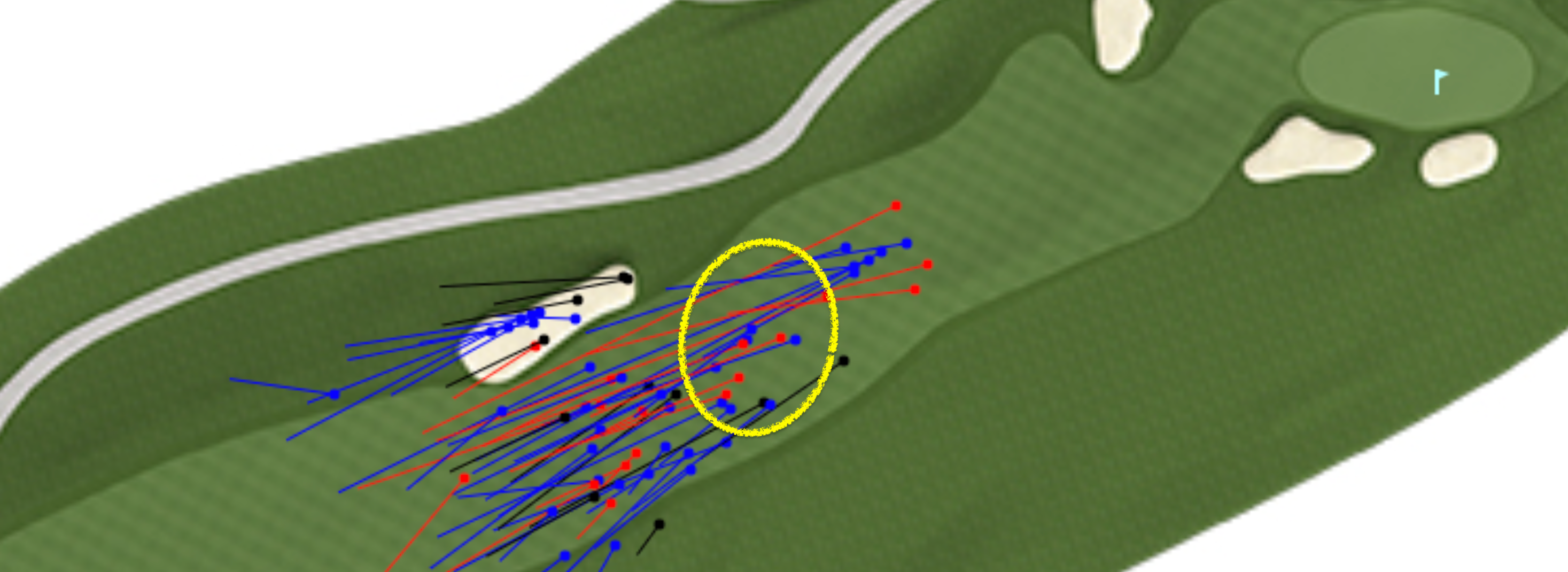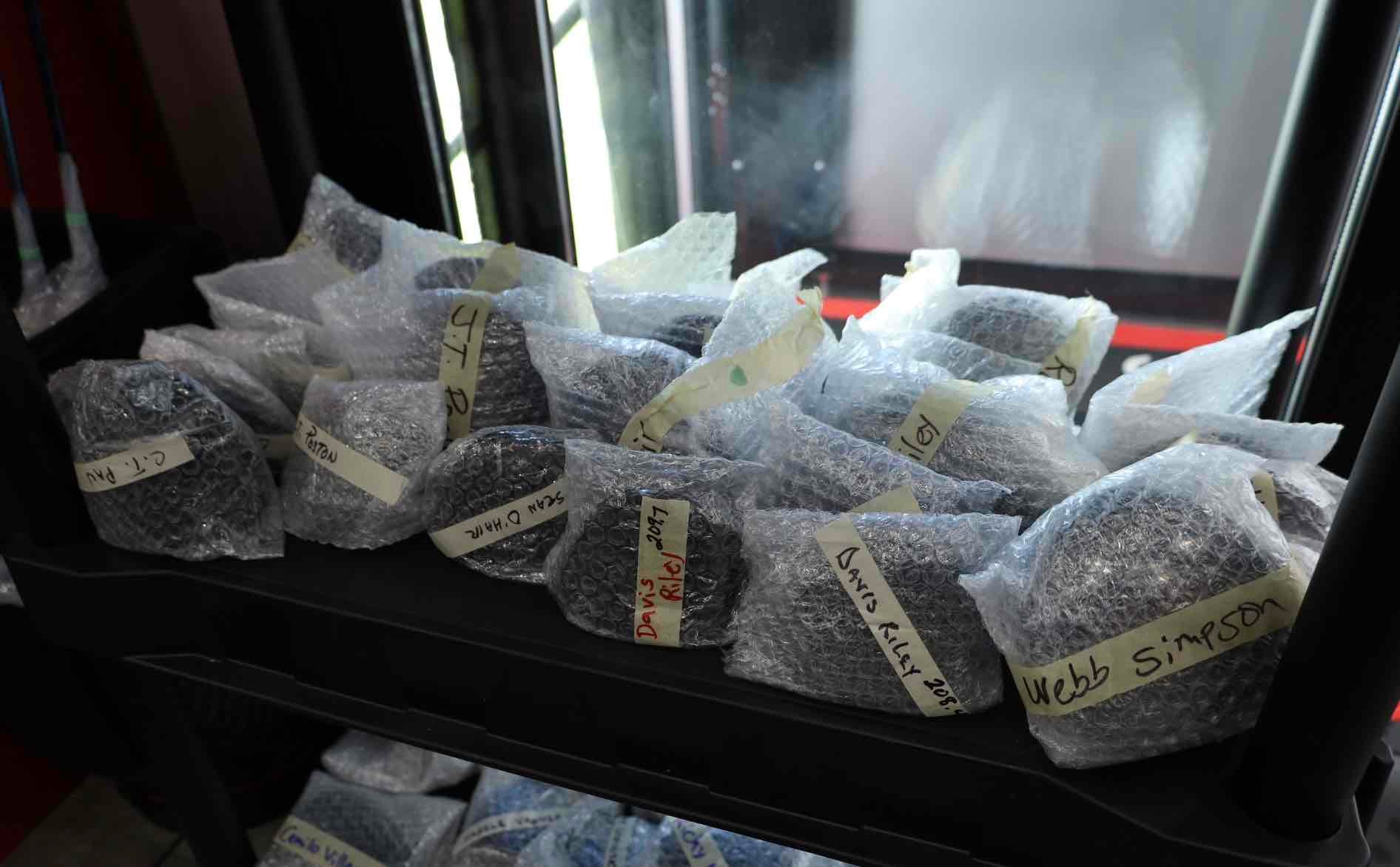
Hitting the hero shot almost always makes you the villain.
Getty Images
Welcome to Play Smart, a game-improvement column that drops every Monday, Wednesday and Friday from Game Improvement Editor Luke Kerr-Dineen (who you can follow on Twitter right here).
Standing over his golf ball on the 72nd hole at the Travelers Championship on Sunday, Sahith Theegala, who was five under for the day, decided to back himself. He tried to muscle his ball over the lip just feet in front of him, hoping to find the front edge of the green just over 100 yards away.
“We were just trying to figure out what the best way to make 4 was and try and force Xander [Schauffele] to make birdie,” he said afterwards.
Theegala said there was more room for error than it looked on television. A great shot would’ve given him a birdie look; a chunk would leave him a pitch shot. There was only one thing he couldn’t do: blade it. And with the pressure cooking, that’s exactly what he did.
“Never in a million years did I think I would allow myself to blade it,” he said.
Playing golf under pressure tends to do that to people. His subsequent double bogey sent the trophy into Xander Schauffele’s hands.
When you’re a PGA Tour player, capable of doing amazing things to and with a golf ball — and in Theegala’s case, five-under through 17 holes — I’ll cut you some slack. Theegala chose to back himself, and you’ve got to give him the benefit of the doubt.
On the surface, though, it at the very least looked like a questionable play for him, which for a player of his quality, means it’s the kind of shot the rest of us should avoid at all costs.
Here’s why.
Moneyballing your way out of trouble
Nick Faldo, on the broadcast, questioned Theegala’s choice of hitting driver off the tee on 18. There’s no doubt in my mind it was an earnest critique. Everything in Peak Faldo’s game would suggest he would’ve striped something conservative down the middle of the fairway and made his opponent hit a golf shot to beat him. Theegala’s issue was that he didn’t have a 3-wood in the bag, which would’ve been the obvious non-driver choice.
And besides, most guys were hitting driver on this hole on Sunday, including eventual winner Schauffele. Theegala had each of the previous three days, and fancied the shot on Sunday, too.
“It was just a perfect tee ball for me. Just a high cut over the tree. I hit that a thousand times this year. I got to trust it, it’s my bread and butter. I put a great swing on it, hit it right in the center,” Theegala said. “Maybe it was adrenaline, squared the face a little sooner than normal. Just didn’t cut.”
It happens, and it doesn’t mean it was a bad call. But the questions do start arising on his next shot.
Theegala felt that trying to advance his ball as close as he could to the green was his best chance at putting pressure on Xander. That’s probably true, but it was also an awkward shot that he needs to hit under pressure. Clearly that brought with it a non-zero chance of something unexpected going wrong, which is exactly what we saw happen.
What if Theegala had just opened the face wide, forgot about the green, and played this shot like a greenside bunker? His drive left 124 yards from the green; had he chipped his ball back into the fairway, anywhere from completely sidewards to diagonally forwards, that puts him somewhere in the yellow oval below.

Chipping his ball to about 100 yards would’ve given Theegala an 85-percent chance at par or bogey.
PGA Tour
Based on the Shotlink data you can see above, that yellow circle encompasses shots 96 to 116 yards hit on Sunday. There were 14 of them in all, and here’s how the scoring for each of them broke down:
7 pars (blue)
5 birdies (red)
2 bogeys (black)
It would’ve only required a simple shot to get Theegala into this position. Once he did, the scoring data from the day suggests he would’ve effectively had a 50 percent chance of getting down in three shots from here, and a 35 percent chance of getting down in two. Looking at Theegala’s own proximity statistics from the season so far, a shot from 96 to 100 yards would probably leave him about an 18 foot putt to save par — a putt he makes about 15 percent of the time. Probably slightly more in this case, because he was one of the top-10 players in the field in putting during the final round.
Anyway, that’s what chipping out and wedging on gives you: a toss-up chance of saving par, and an 85-percent chance of nothing worse than bogey. Does Xander still birdie 18 knowing he needs to in order to win — or at the very least, secure a spot in a playoff? That’s an alternate reality we’ll never know. Instead, the result of Theegala’s more ambitious attempt was to leave him a similar length putt for bogey, which brutally lipped out, and a double-bogey which left him splitting the runner-up check.
The lesson: Don’t hit the hero shot
Again, this is not to kick a man while he’s down — I was genuinely rooting for Theegala on Sunday, and will be more so the next time he finds himself in contention.
This shot on Sunday was just a fascinating reminder of how the game of golf forces us to override our basic human instinct of wanting to do more when we feel like our back is against the wall. To recover from a bad or unlucky shot with an even better or luckier next one. In reality, we’re best served thinking of moments like this as a speeding ticket. Pay your ticket, and continue on your way.
When you find yourself with the opportunity to hit a hero shot, do yourself a favor, and don’t. Take the most boring, simplest route back into position, and continue on your way. There may not be glory in taking the boring route, but there’ll be a trophy waiting for you at the end of it.









